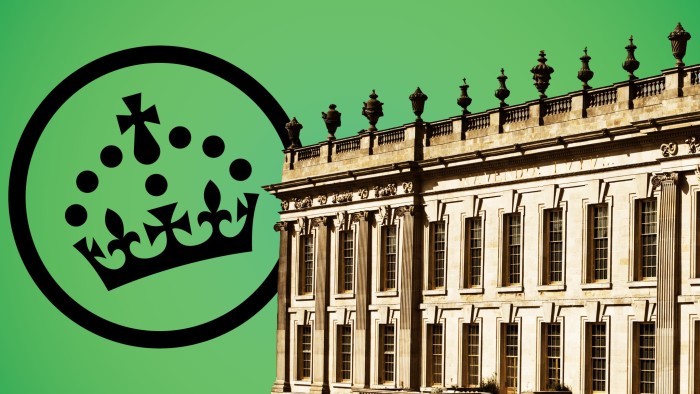Unlock the Editor’s Digest for free
Roula Khalaf, Editor of the FT, selects her favourite stories in this weekly newsletter.
He only needed to live three months longer, but on November 26 1950, the 10th Duke of Devonshire died suddenly of a heart attack, plunging one of Britain’s most popular stately homes, Chatsworth House, perilously close to financial ruin.
The duke had already transferred most of his assets to the next generation, but the regulations at the time meant he had to live at least five years for the gifts to avoid inheritance tax (IHT). He collapsed just short of the deadline, leaving his estate facing a punitive 80 per cent tax charge.
The next duke and duchess were forced to sell off large parts of the family estate, giving their neighbouring Elizabethan mansion, Hardwick Hall, to the National Trust and donating works by Rembrandt, Holbein and Van Dyck to British museums. Today, Chatsworth is in a trust to protect it from a repeat of this near disaster.
For many UK farmers and family business owners there is not only a moral in this story — there is a deadline.
Last year’s Budget put a £1mn cap on agricultural assets and business property that can be inherited tax-free. Anything above this will pay an effective IHT rate of 20 per cent. Each spouse has an allowance, but for this to apply both would have to be registered as part owners of the assets.
I can’t imagine anyone being hit with an IHT charge like the Devonshire family, but some will still have to consider selling off land or business assets to pay the bill, which could make the farm or business no longer viable.
The answer for some will be to pass on their estate to the next generation quickly. So long as you live seven years, there’s no IHT due on anything you give to another individual, though there may be capital gains tax.
The pressure of that ticking clock may force some to pass on assets sooner than they’d have liked. There is the added complication of who gets what in this scenario. What if you have three children but only one ends up wanting to farm or to run your pharmacy business? Will Mum and Dad, by trying to be fair and giving equal thirds to siblings, cause its ultimate demise? Death by IHT?
One option is to use a discretionary trust. These are complex and anyone considering one will need professional advice, but essentially, when you transfer your assets into a discretionary trust, those assets no longer form part of your personal estate for IHT purposes (again, so long as you live for seven years).
The benefit is that the assets can still be controlled. The trust is managed by trustees who can decide who gets what from the farm or business’s profits. So if, say, daughter number three is the only one who actually ends up dragging herself out of bed at 4am to milk the cows, she can be fairly rewarded.
Another bonus is that, because the farm or business doesn’t actually belong to any one individual, it can make unexpected events like divorces and bankruptcies easier to cope with.
But it’s not quite the no-brainer it seems, unfortunately. Every 10 years you have to calculate the value of the assets held within the trust and pay a “decennial charge”. Generally, this is a maximum of 6 per cent, but for business or agricultural assets it will be 3 per cent of the value of the trust in excess of the nil-rate IHT allowance, which is currently stuck at £325,000, plus the trust’s own business or agricultural property relief allowance of £1mn.
It’s not great, but it’s more easily planned for than having the farm or business owner dying unexpectedly and suddenly everybody facing a huge tax bill at the same time as they’re grieving and trying to keep the place going.
Creating a trust does add a layer of complexity. You have to decide who the trustees will be; you will need proper accounts each year; and the trust will need to register with HM Revenue & Customs and file its own tax return. And, as with gifts, once you put the farm or business into a trust you can no longer benefit from it, if you want to exempt it from IHT. As a result, you may want to put just half into trust to protect your own income and interests. This has the advantage of allowing use of your own £1mn of business or agricultural relief as well as the trust’s.
For many this will look attractive. But not necessarily for long.
From April 6 next year there will be an IHT tax charge for putting businesses and farms into a trust, charged at 20 per cent of the value in excess of the nil-rate band and the £1mn relief. This could make the structure pointless for many.
Take heed of the 10th Duke of Devonshire — put your plans in place as soon as possible. If these include setting up a trust, that means acting before next April.
Clare Munro is senior tax adviser at Weatherbys Private Bank
